Why people are ripping flowers from local waterways
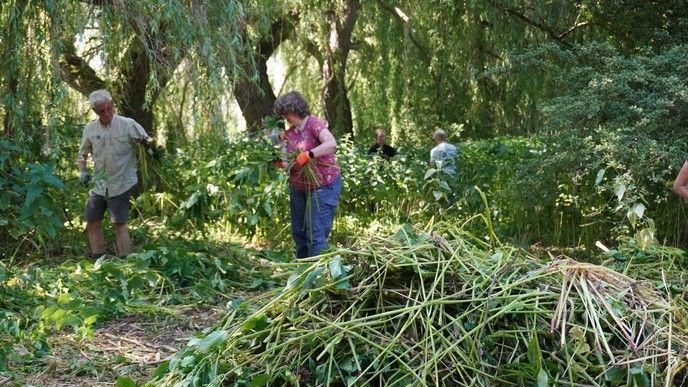
Himalayan balsam has taken over parts of Nottinghamshire's waterways
- Published
Thousands of plants along Nottinghamshire's waterways are being ripped out by the root.
Volunteers have spent more than 1,000 hours during the summer getting rid of Himalayan balsam - often seen in swathes with pretty pink flowers.
But the invasive species, originating from the harsh mountain conditions of the Himalayas, is thriving here in the UK at the risk of local ecosystems.
Nottinghamshire Wildlife Trust has been running a project to protect wildlife and get rid of the invasive plants.
What is it and how did it get here?
Himalayan balsam is a wild flowering plant that can grow up to two metres tall and grows large pink, bonnet-shaped flowers.
Although they originate from the Himalayas, they are commonly seen in the UK, particularly along riverbanks.
Miriam Lawley, from Nottinghamshire Wildlife Trust, is helping to deliver the Thriving in a Wilder Trent Project.
She explained the plant was first introduced to the UK almost 200 years ago.
"It was brought over first by the Victorians," she said.
"Because it was such an attractive plant, they wanted to introduce it to their gardens."
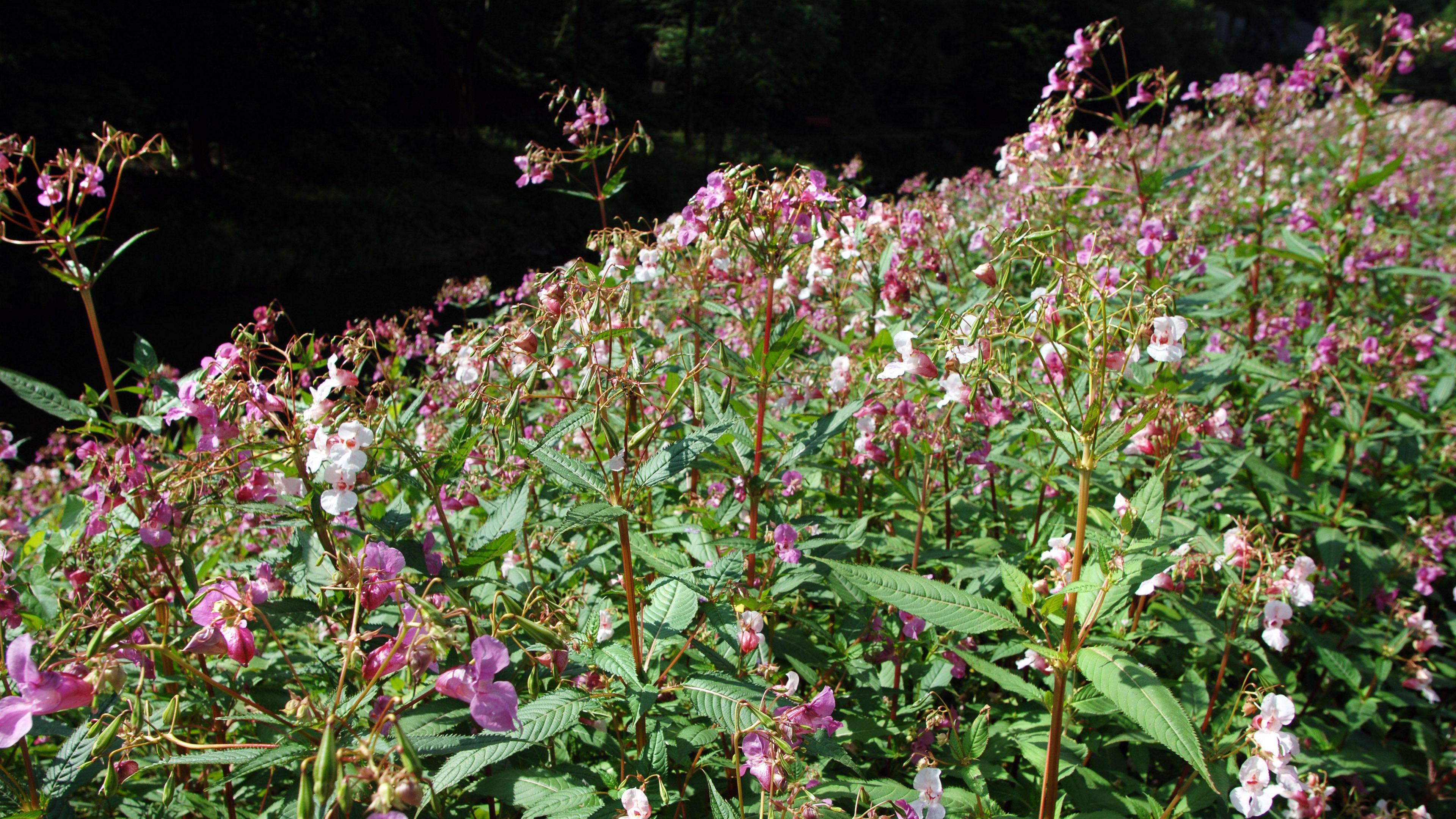
While the flowers might look pretty, Ms Lawley said they were not beneficial to local insects and other wildlife
Where can you find the plant?
Its place of origin means the "well-evolved and adapted" species can survive pretty much "anywhere", according to expert Ms Lawley.
"Once it was brought over by the Victorians, it kind of hit the jackpot because living is much easier here where the soil is quite fertile," she added.
In the UK, the plant is typically found along waterways because rivers and streams help to spread its seed.
Because of that, the plant is prevalent on sites along the River Trent, including Attenborough Nature Reserve.
The plant usually starts to appear in May - or April, following a warm winter - and is found throughout the summer until August.
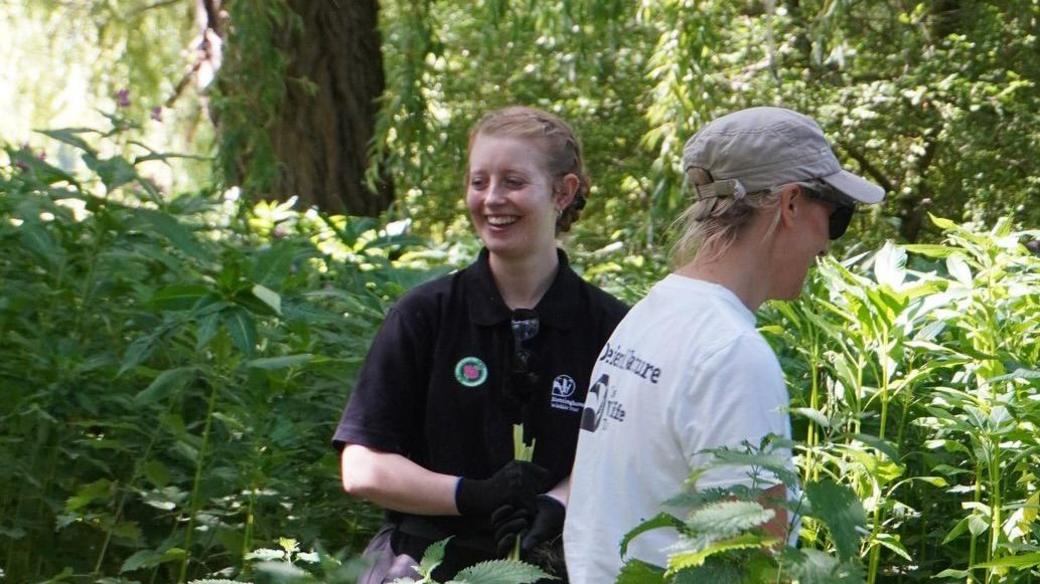
Miriam Lawley is a project officer for the Thriving in a Wilder Trent Project, led by Nottinghamshire's Wildlife Trust
How does Himalayan balsam spread?
The species has an "explosive seed pod mechanism" which helps it scatter its seeds.
Each individual plant can produce up to 800 seeds and once ripe, the seed pods split open, spreading them as far as about seven metres.
"It very rapidly becomes a big problem in the UK when you have that many seeds spreading over such a large area," Ms Lawley said.
It was that mechanism that helped the plant spread beyond Victorian gardens and into natural areas.
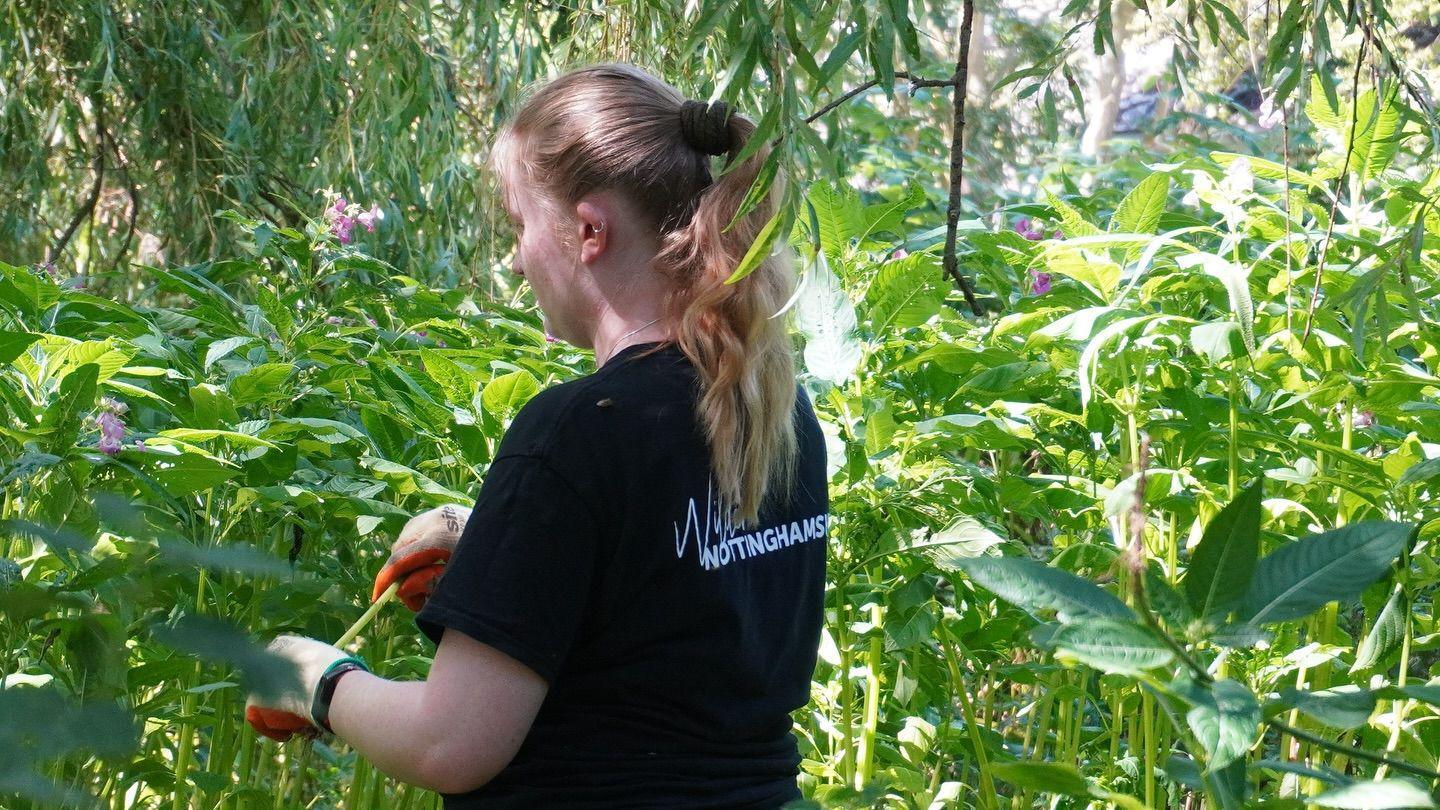
The plants can grow as tall as two metres
What makes the plant invasive?
While Himalayan balsam might look pretty once flowered, it comes with a threat to local biodiversity, Ms Lawley said.
By taking over large areas of natural land, the plant "out-competes" a lot of native plants that insects rely on.
Ms Lawley said: "One of the things that a lot of people think about Himalayan balsam is that it's really good for bees because we often see a lot of them flying around.
"Many of them are attracted to this really sweet smell but a lot of them can't actually get into the deep flowers to get the pollen because they've not evolved alongside this kind of flower.
"So we actually find that there's a lot of insect declines where Himalayan balsam is really prevalent, as well as the decline in native plants."
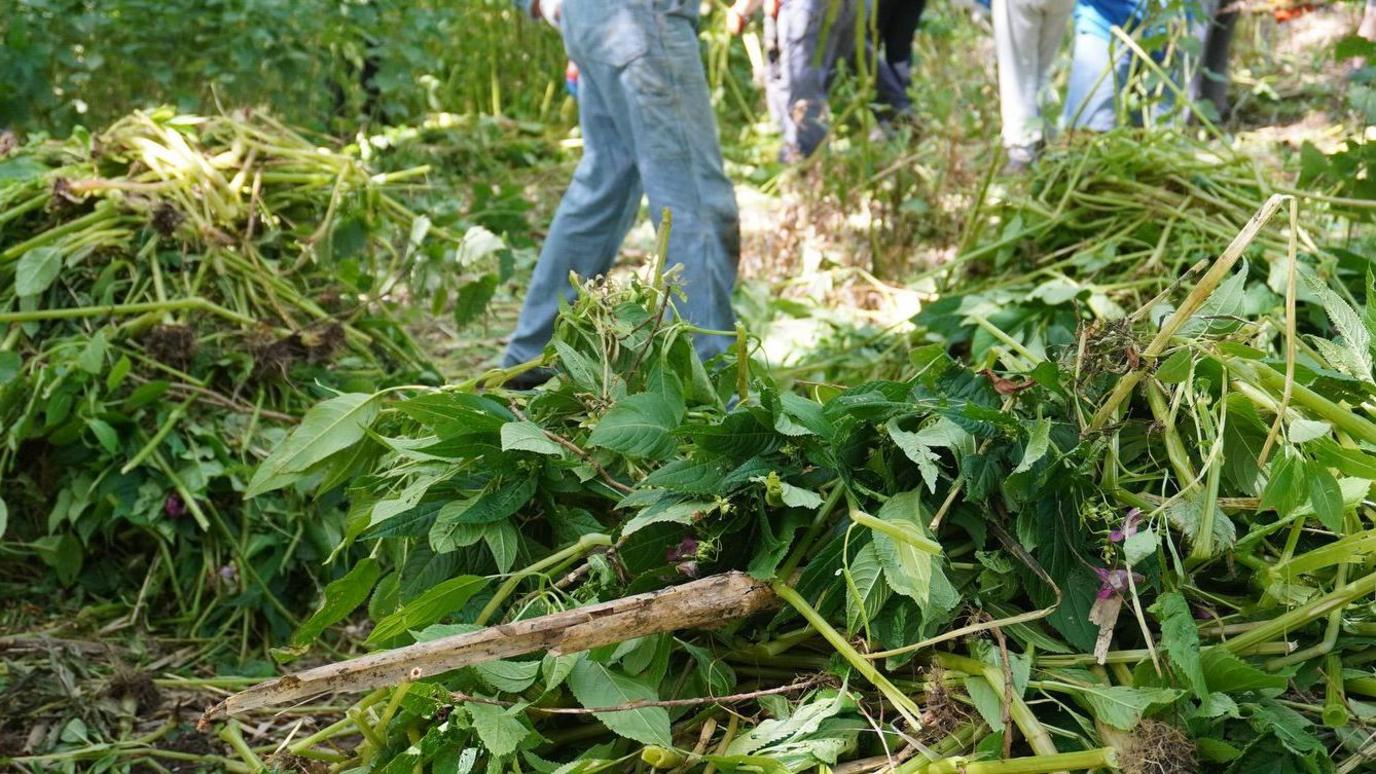
The plants are piled high and left to rot with their roots snapped off to stop regrowth
Getting rid of Himalayan balsam
Ms Lawley has been a key part of the Thriving in a Wilder Trent Project, which involves work to enhance, restore and create vital wildlife habitats.
Part of that project has involved the clearance of Himalayan balsam, before it begins to flower, across large areas of Nottingham and the wider county.
Significant swathes of Attenborough Nature Reserve have been cleared of the plant since May.
The volunteers have also helped tackle the problem at Skylarks Nature Reserve near West Bridgford, Iremongers Pond in Wilford and Netherfield Lagoons, owned by Gedling Conservation Trust.
Getting rid of the plant simply involves pulling the plant from low down on its hollow, tube-like stem, to ensure its short roots are fully removed from the soil.
The plants are then left in piles to rot down and their roots snapped off to ensure they do not regrow into the soil.
"It's actually quite a mindful activity," Ms Lawley said.
"A lot of my volunteers really enjoy it for that aspect because you can find it quite relaxing, you don't have to think too much about anything, you can kind of just work through an area listening to the birds singing, listening to the river flow."
It is hoped the work will have a long-lasting impact on Nottinghamshire's green spaces.
Get in touch
Tell us which stories we should cover in Nottingham
Follow BBC Nottingham on Facebook, external, on X, external, or on Instagram, external. Send your story ideas to eastmidsnews@bbc.co.uk, external or via WhatsApp, external on 0808 100 2210.
Related topics
- Published3 August
